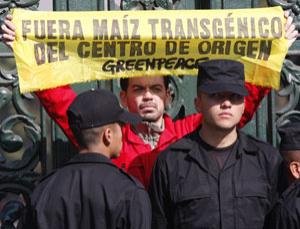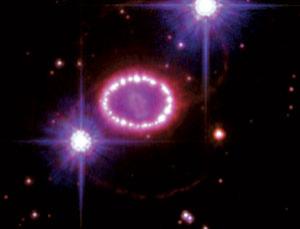
© Marco Ugarte/AP/PAGreenpeace stages a protest against a new Mexican bio-security law that, it claims, does not include safeguards to prevent transgenic contamination of corn seeds.
Now it's official: genes from genetically modified corn have escaped into wild varieties in rural Mexico. A new study resolves a long-running controversy over the spread of GM genes and suggests that
detecting such escapes may be tougher than previously thought.
In 2001, when biologists David Quist and Ignacio Chapela
reported finding transgenes from GM corn in traditional varieties in Oaxaca, Mexico, they faced a barrage of criticism over their techniques.
Nature, which had published the research, eventually disowned their paper, while a second study by different researchers failed to back up their findings.
But now, Elena Alvarez-Buylla of the National Autonomous University in Mexico City and her team have backed Quist and Chapela's claim. They found transgenes in about 1 per cent of nearly 2000 samples they took from the region (
Molecular Ecology, vol 18, p 750).



Comment: SoTT called this one.